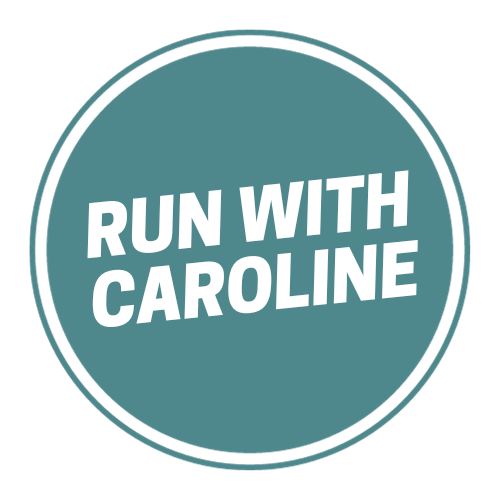Many runners are forced to hang up their shoes when an injury stops them in their tracks. The good news is there are quick and easy habits you can employ for injury free running.
There’s nothing more annoying for a runner than pain. Pain can stop you in your tracks or it can be chronic – starting small and gradually getting worse over time.
According to a 2018 study which reviewed over 300 runners over a two year period, 199 (66%) runners sustained at least one injury.
Of those injured runners, 111 sustained injuries more than once.
A good injury prevention strategy is essential for any runner looking to feel good and run strong week in, week out.
So if you are running regularly and keep asking yourself: “Why do I keep getting injured?”
Use these three quick and easy habits you can learn how to prevent common injuries and enjoy more injury free running.
After all, prevention is better than the cure!

Injury free running: Listen to your body
There are many common, running-related injuries that runners of all levels encounter at one time or another on their running journey.
Most running-related injuries like IT band syndrome, shin splints and plantar fascitis are the result of overuse.
Other factors like improper fitting running shoes can also make running injuries worse.
By paying attention to your body and adding a few simple things into your training routine, you can avoid a lot of these overuse injuries.
Your brain is responsible for sending signals to your body to let it know when to run, when to stop, when to rest, when to recover.
What to do on your next run
Listen to your body and really try and focus on what it is telling you.
If you have a gut feeling that today is not the day for that long run, then listen to your gut.
Usually, signs of an overuse injury start as a whisper. Don’t ignore it before it’s too late.
Tune into your body and muscles and ask yourself: “How do my legs feel?” “How do my feet feel?” “How strong do I feel?”
If you start to feel a niggling pain, take a step back and assess where it could be coming from and what you could do to minimise this pain before it gets worse.
Listening to your body also means spending adequate time for rest and recovery.
Rest and recovery are essential for any runner looking to stay injury free.
Many runners consider rest days lost time. Don’t worry – you won’t lose all your running fitness in one day!
Instead, view your rest day differently. Take some time to do something other than running.
Cross training (or ‘active recovery’) activities like yoga and walking are all good examples.
Remember, you need your rest days as much as you need your long runs and speedwork.
If you keep getting injured when running, a little R&R may be just what the doctor ordered!

Injury free running: Stretch and foam roll
Many runners are guilty of neglecting a proper stretching routine. When in fact it’s probably one of the best ways to enjoy more injury free running.
If you keep getting injured when running, a proper stretching routine may be the answer for you.
Stretching and foam rolling are important because they help reduce muscle soreness and loosen any tight muscles after a run and in between runs.
When you stretch your muscles, you increase the blood flow into them, therefore increasing the amount of oxygen flowing around your body.
What to do after your next run
Stretching is something that I’d recommend to anyone, runner or not.
It allows you to focus and check in with how your body is feeling.
If you feel a slight twinge or pull somewhere whilst stretching, for example, this may help you pinpoint where the pain is coming from and help target it for rest and recovery.
Check out the best cool down stretches to do after a run for more information.
Foam rolling is equally as beneficial. Using a foam roller is satisfying yet painful at the same time!
Use a foam roller to loosen tight muscles and promote flexibility.
Foam rollers are available online and in most sports stores.
If you’re new to foam rolling, I recommend you start with one that’s smooth, then go onto one with the nobbly bits on it.
Things like tennis balls are also economical ways to foam roll without using an actual foam roller.

Injury free running: Do hip flexor and glute strengthening exercises
Your hip flexors and glutes are powerhouses when it comes to running.
They can be thought of the ying and yang of power while running.
The glutes are a group of three muscles which make up your buttocks. These muscles are essential for stability and power while running.
Weak glutes can cause your knee to collapse inward, which can be a precursor to injuries like IT band syndrome.
Hip flexors help contract and pull the thigh towards the torso, allowing you to bring your knee towards your chest as you run.
Tightness in the hip flexors has been shown to be a cause for various lower body injuries, including hamstring and groin injuries and lower back pain.
What to do before and after a run
Try and include hip flexor and glute strengthening exercises in your training routine, either as part of a dynamic warm up or in between runs.
Some good glute strengthening exercises include squats, single-leg hip bridge, clams and resistance band monster walks.
It’s also a good idea to include glute activation drills in your warm up.
One of my favourite drills for glute activation is fast feet:
- With your feet hip width apart, lower your body down into a half squat position and reach out with your arms in front of you.
- Lift up your heels so you are on the balls of your feet.
- Hold this body position, then start running as fast as you can on the spot.
- Stay low as you run and you will feel the burn in your quads.
Glute activation exercises like this will help prepare and engage your muscles for the run ahead.
Hip flexor stretches like low lunges, reverse pigeon and forward bends are great to release tightness in your hips.
With this advice, hopefully you won’t be left wondering why you keep getting injured when running.
Let me know in the comments below how you get on and if these tips help you enjoy more injury free running.
- 5 things I wish I’d known before returning to running - March 3, 2024
- Running 20 minutes a day: Benefits + how to start - January 27, 2024
- How to run your first 2 hour half marathon - January 16, 2024

Matthew
Tuesday 9th of June 2020
Strength training is so important and often overlooked as a runner. I, like many, wish I picked this up years ago!
Run With Caroline
Tuesday 9th of June 2020
It is so important Matthew! I too neglected it for many years when I first started running. I'm glad I do it now though :)
Gottfried
Saturday 2nd of May 2020
Hi Caroline, thanks for your mail. I enjoy to read it. Best regards Gottfried
Run With Caroline
Saturday 2nd of May 2020
Hi Gottfried! Glad you enjoyed it and I hope my tips keep you injury free for longer :) Thanks Caroline